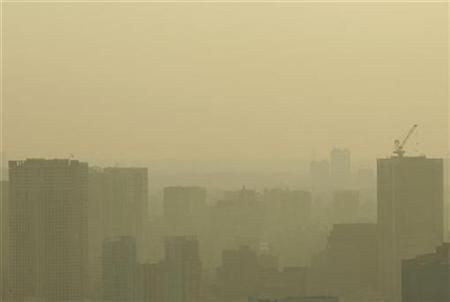China's Toxic Air Pollution Now Affecting Japan [PHOTOS]
China's thick smog has shown signs of clearing in some of the nation's big cities recently. But where does all the pollution go?
Japan, apparently. Japan's environment ministry is reporting that China's extreme smog is starting to affect some coastal areas on Monday, sparking worry among citizens. According to an AFP report, Japan's environmental offices are being bombarded by citizens hoping to get more information on the health risks that China has already been dealing with.
"Access to our air-pollution monitoring system has been almost impossible since last week, and the telephone here has been constantly ringing because worried people keep asking us about the impact on health," an official said in the report.
As Japan and the rest of the world have been watching China struggle with its increasingly frequent air pollution problems, they likely never thought they would be affected as well. Now news and weather programs are showing a growing swirl of pollution that has started moving east.
As tensions between the two nations over the disputed Diaoyu/Senkaku islands continue to rise, China's toxic pollution making its way to Japan will certainly not help relations. Though official statements out of a Japan are careful not to trigger another diplomatic conflict by attributing all the pollution to China just yet, the connection is hard to ignore.
"We can't deny there is an impact from pollution in China," Yasushi Nakajima, an official with the Japanese environment ministry, said in the report.
This isn't the first time China's pollution found its way to Japan. In 2007, a spike in 28 areas in western Japan in the number of people suffering from stinging eyes and throats as a result of pollution had many experts pointing their finger to China. Toshimasa Ohara, the head of the National Institute of Environmental Studies' regional atmospheric modeling program, said China has contributed to the sharp rise in photochemical smog in Japan since 1990.

© Copyright IBTimes 2025. All rights reserved.






















